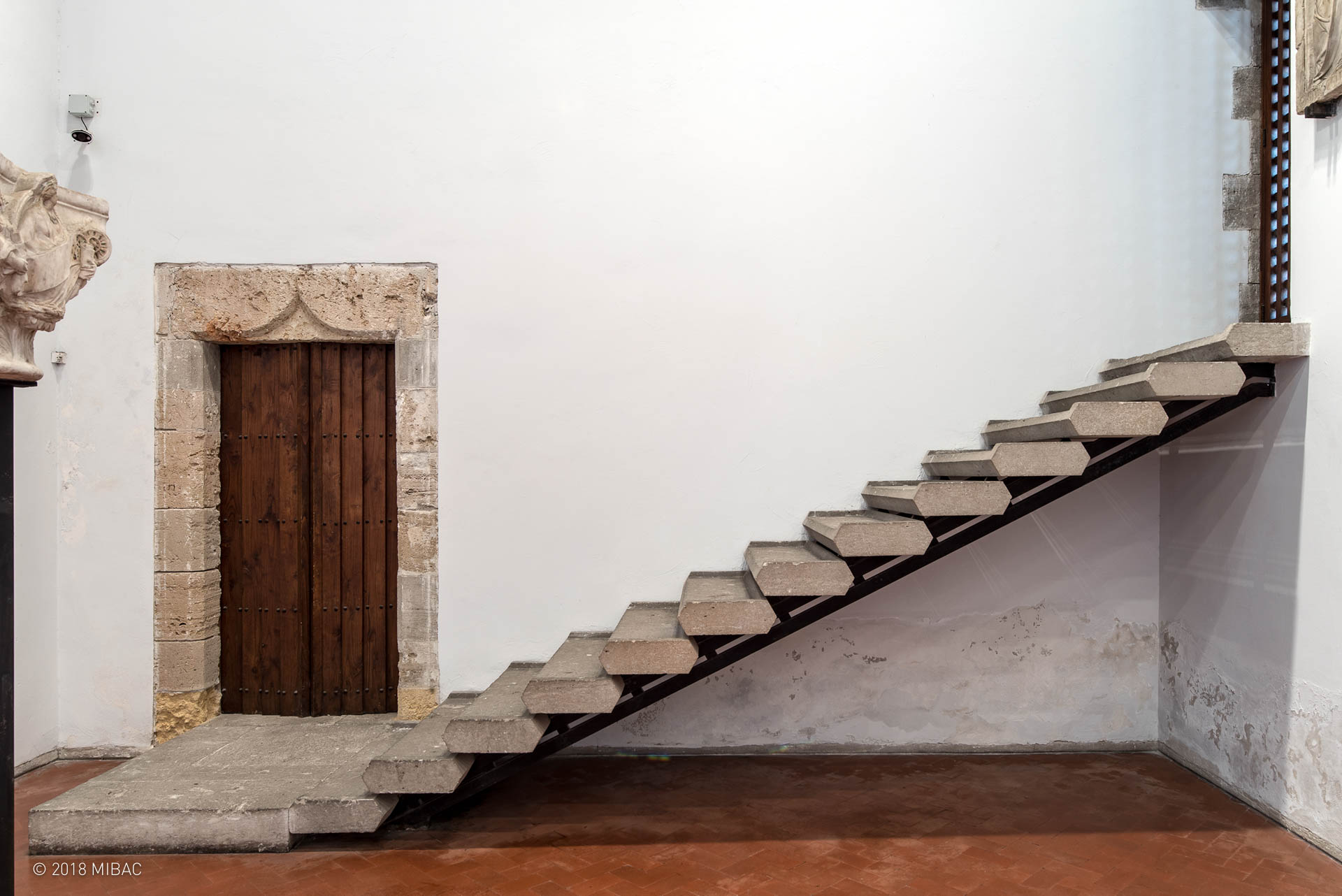
Carlo Scarpa and the museum tour of Palazzo Abatellis
Sicily is not only remembered for Baroque architecture or the temples of the Greek colonies. This region is home to many celebrated contemporary works that speak of new stories brought by numerous artists and architects who chose to tell a new tale, a new design in an already prosperous land. One example is the museum layout at Palazzo Abatellis in Palermo by Carlo Scarpa.
Abatellis Palace and its expansion
“There is no past, everything is simultaneous in our culture; there is only the present, in the representation we make of the past, and in the intuition of the future.”
with these words Gio Ponti in 1957 seems to have inspired one of the most admirable architectural interventions of his colleague, architect Carlo Scarpa.
For the museum, opened in 1954 at the request of the then Superintendent of the Galleries of Sicily Giorgio Vigni, was commissioned to set it up by architect Scarpa. Despite the fact that some time has passed since its opening, when speaking of Palazzo Abatellis, Italo Calvino’s definition regarding the “classics” of literature remains valid, namely that like those books, the museum will never “finish what it has to say.”
Indeed, it is an episode of avant-garde public commissioning that continues to fascinate visitors and scholars because of its constant ability to create ever new relationships between the architectural aspect, a Catalan Gothic-style palace dating from 1490, and the art masterpieces on display. The museum space created by Scarpa is a way through which a dialogue is created between different historical moments in the confrontation between visitors and the works.
Charles said that “in order to achieve something you had to invent relationships” e Abatellis Palace is a casket in which correspondences are enclosed, like a poetic text. The retouching with which the designer put his hand on the building after it was restored after the war by superintendents Mario Guiotto and Armando Dillon was limited to a few circumscribed interventions that with his mastery succeeded in recognizing the important points and giving new life to the factory.
By studying each element to perfection, the architect was able to create a spatial museum itinerary that to this day has varied, no longer perceiving the continuity that Scarpa originally conceived. At the end of the Gagini Hall, for example, Scarpa placed a staircase to access the outside ramp without having to go out into the entrance court again. To date, the outside ramp has been closed and the inside ramp rendered unusable.
Once access is made to the upper area, the museum begins again to have a neat and tidy thread that maintains coherence among the various parts. An enlargement of the gallery was made, with the inclusion of the new wings, in which a detachment between the Master’s work and his additions was denoted.
The fate of the route created by Carlo Scarpa, which envisioned great involvement on the part of the user of the spaces always through a new point of view, such as the double view of the Triumph of Death, unfortunately did not have great luck.
The original designs
In the original designs of the furniture and display stands, Carlo Scarpa proved to be highly refined and meticulous in observing the long Central European tradition of applied arts and careful small-scale production.
In the details the expert’s attentions thicken, as in the drops of the welds of the cross irons, where the material has been bent to the design not for mere ornament. Scarpa debates between skillful technical craftsmanship and abstraction around form, arranging what is perfectly in his possession according to the icons of a pre-seen idea.
How to reach Palazzo Abatellis
The building is accessible.Both through buses and trains. I tickets are very affordable because they range from euro, for residents, to 8 euro for residents, leaving admission free for minors or those over 65 years old.
Giulia Nari
top photo: Atlas of Contemporary Architecture





